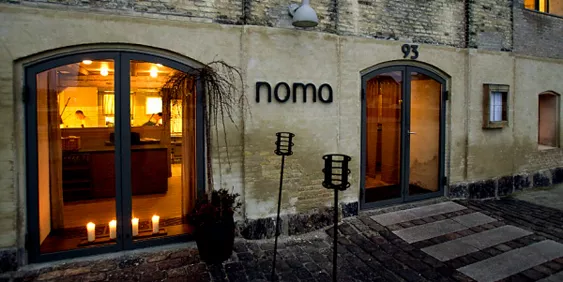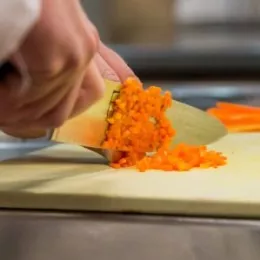I feel exceedingly privileged to have had the opportunity to attend MAD4. But that privilege was surpassed when I learned that I also had an opportunity to have dinner at Noma, the best restaurant in the world, in my humble opinion. In this case, my opinion is shared by many, considering Noma has been ranked best restaurant in the world by San Pellegrino four of the last five years (it finished second in 2013 but is back on top this year).
MAD4, curated by Rene Redzepi and Alex Atala, asked the question, “What is Cooking?” and created an insightful forum for chefs to demonstrate thought leadership on many global food issues. Inspiring speeches from Ron Finley, Chris Cosentino, Albert Adria, and many others were the backbone of this epic event. Much of the event is documented at madfeed.co; all is worth watching and reading.
But Noma…WOW is the only way to describe it. Photos and details about individual dishes at Noma are well documented so I’ll start with something that’s not: the fermentation lab.
Lars Williams, (FCI/ICC culinary grad 2006; Outstanding Alumni winner 2014) is the head of research and development for Noma. His job is beyond fascinating and he gave me an inside look. He was very proud of the fermentation lab that they had just built and completed only three weeks before my arrival. I’m an amateur fermenter – longtime homebrewer, maker of homemade vinegar and lactic acid fermented ungodly hot sauces, etc. – so this is of particular interest to me. The lab consists of five “rooms” – one is a control center with some vinegar making production and some heavy equipment, including a centrifuge. I learned more about vinegar making in 10 minutes than I’ve managed to learn making my own vinegar over the past decade. Time to put ethyl alcohol on my shopping list (Everclear should do it). The other four rooms are smaller and temperature controlled. We spent a few minutes in the warm room (close to a sauna but not quite) with the meat garums, aka fermenting meat. Fish sauce is a good example of a garum, but Noma makes several from cloven-hoofed creatures. The beef garum is made from off-cuts that have been combined with seaweed. Apparently that gets the right kind of action going so that many months later the precious liquid can be used to make oils and cure other things (like the cured egg yolk on the menu). Another room had mushrooms fermenting in cryobags (similar to my hot pepper mash method, albeit temperature controlled).
The amount of things fermenting and/or being purposefully inoculated with molds was astonishing. This is where ingredients are transformed, using ancient techniques, to create new ingredients in a modern setting. This process, which apparently has a high failure rate in the R&D phase, is what puts Noma in another gastronomic universe. There are no gimmicks here but there is plenty of deep thought and attention to every detail. Noma is as ingredient-focused as it gets. This is no mystery. But how the ingredients are prepared, and in many ways transformed, is beyond innovative.
Something that really struck me was how Lars described “luxury items” at Noma. He told me about a pea that was served in the spring as one of the first dishes. Every customer got one pea. Each pea took 12 man-hours to prepare! Although Noma does serve some caviar, the luxury in the items is in the preparation, not in the cost of the raw ingredient. There are no cheap tricks; no wow factor based on a splurge ingredient. Luxury boils down to technique. Creativity, yes, but lots and lots of precise technique.
My philosophy on cooking is simple. I often utter the following, as an equation:
Great ingredients + great technique + just a bit of creativity (not too much) = great cuisine.
The cuisine at Noma breaks my mold a bit on the creativity part. It’s more than just a bit and definitely not restrained. But I loved every gram of it and it all worked in a perfect harmony with the ingredients it accented. I’m ready to go back for another season.
Erik Murnighan is President of the International Culinary Center.
From basic knife skills through every station on the line, ICC’s trademark Culinary Arts course — created under the guidance of Deans Jacques Pepin, Andre Soltner and Alain Sailhac — provides hands-on, real-world knowledge for you to succeed in a culinary career in just six to nine months.
This blog post was originally published by the International Culinary Center (ICC), founded as The French Culinary Institute (FCI). In 2020, ICE and ICC came together on one strong and dynamic national platform at ICE's campuses in New York City and Los Angeles. Explore your culinary education where the legacy lives on.



